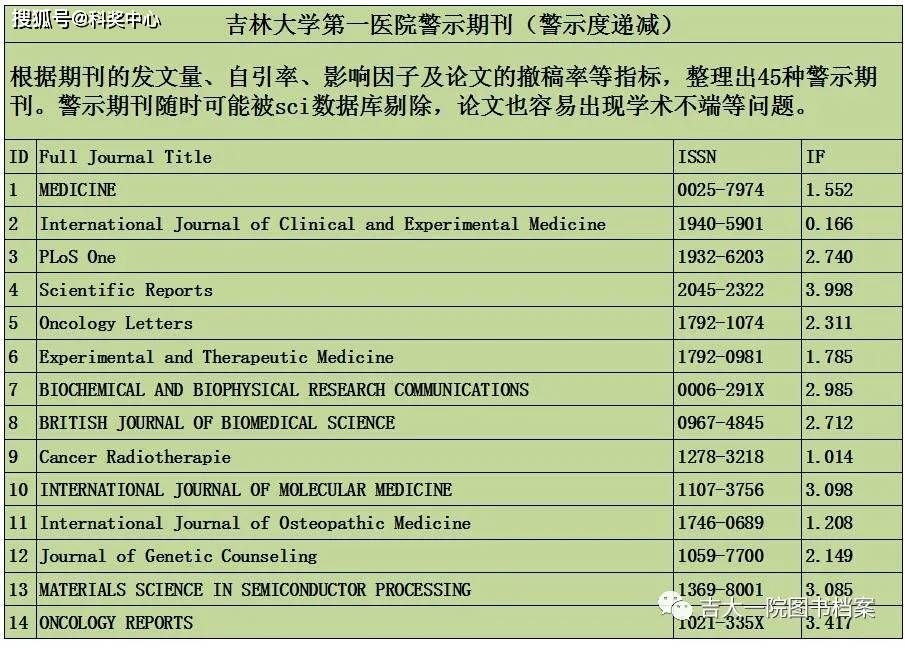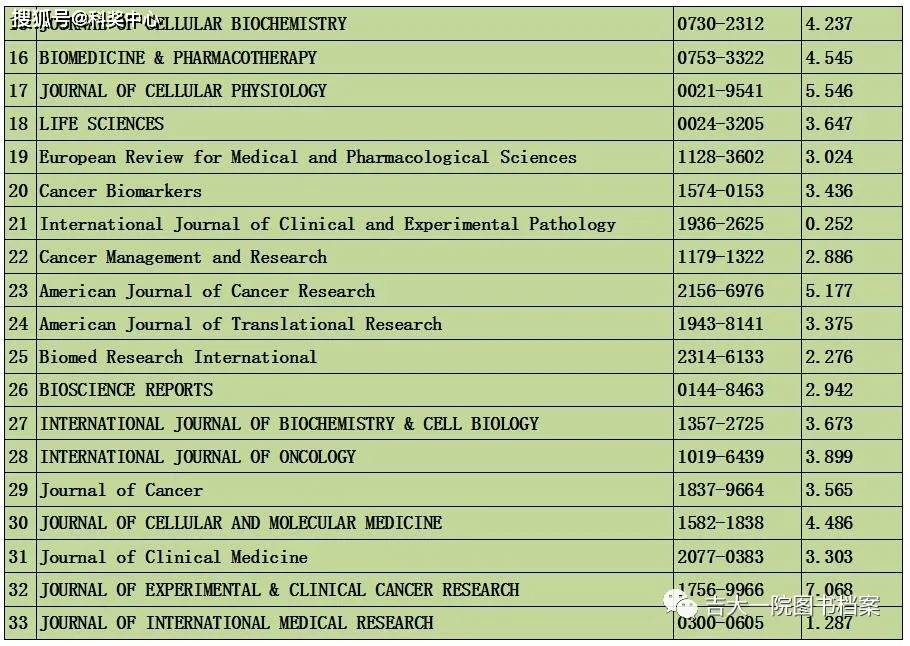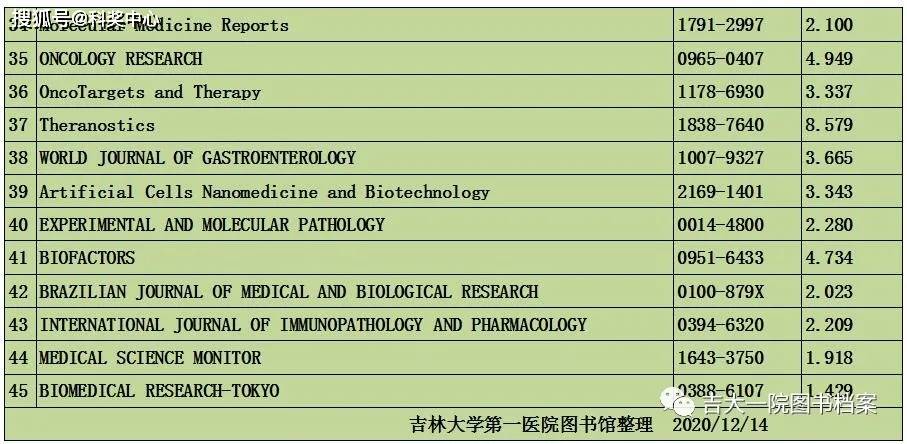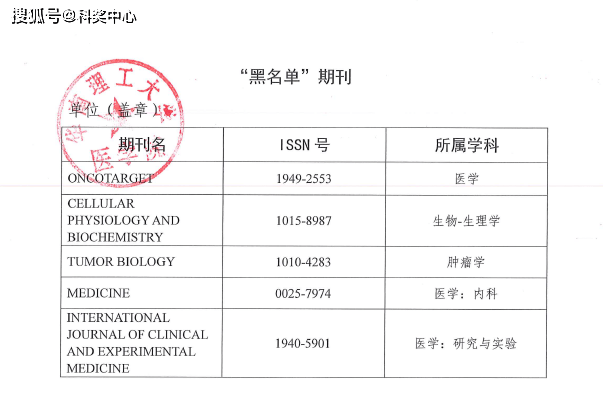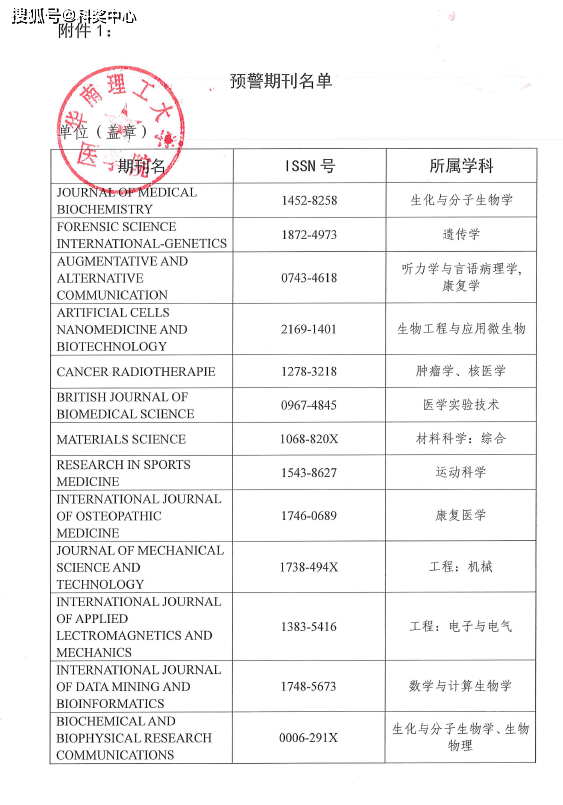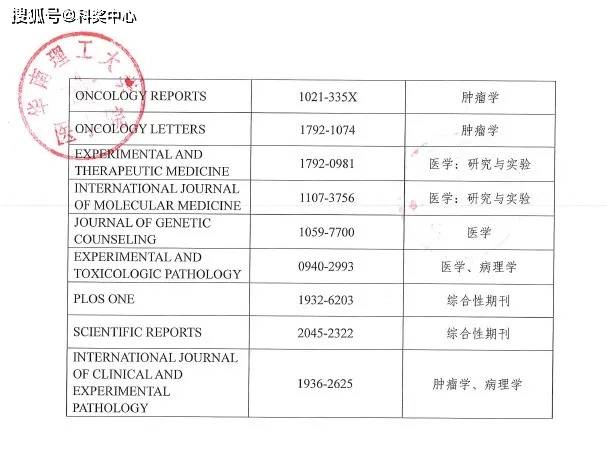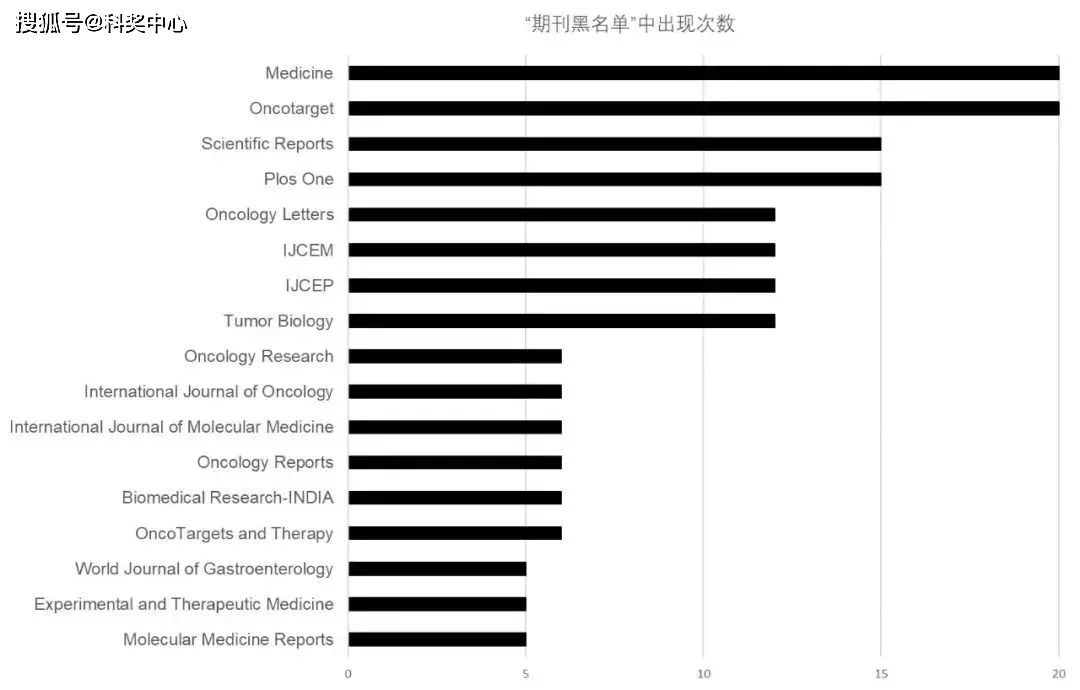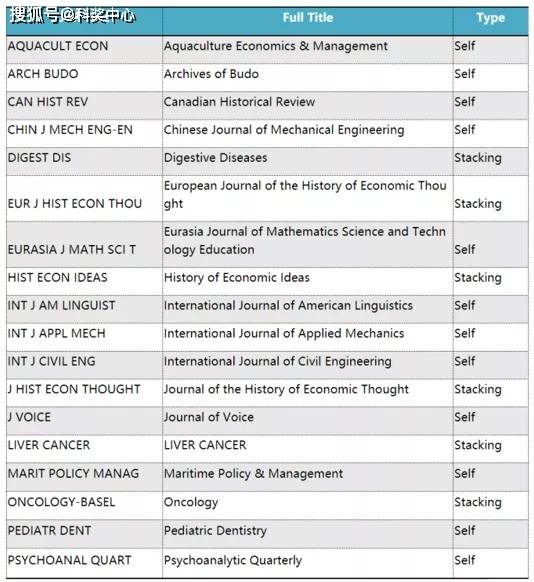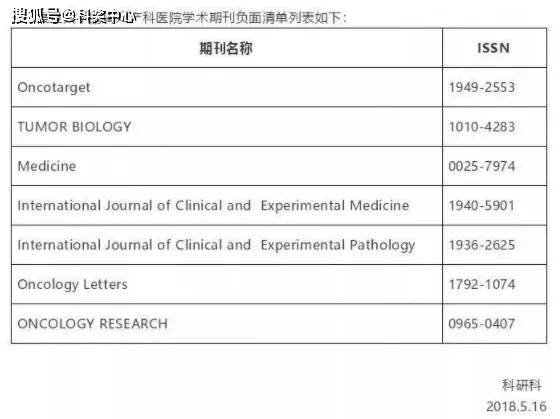Selected journals with Impact Factor indexed .
Acta Clinica Croatica
Impact factor: 0.421 (2013). Subjects: Medicine (General).
Acta Dermatovenerologica Croatica
Impact factor: 0.581 (2013). Subjects: All aspects of the diagnosis and management of skin and venereal diseases.
Acta Nature
Impact factor: 0.872 (2013). Subjects: Molecular biology, biochemistry, biomedical disciplines, and biotechnology.
Acta Neurobiologiae Experimentalis
Impact factor: 2.244 (2013). Subjects: All aspects of neuroscience.
Acta Orthopaedica et Traumatologica Turcica
Annals of Indian Academy of Neurology
Impact factor: 0.624 (2013). Subjects: Neurology, neuropsychiatry, and neuroimaging.
Annals of Thoracic Medicine
Impact factor: 1.338 (2013). Subjects: Pulmonology, thoracic surgery, critical care medicine, respiratory therapy, transplantation, sleep medicine, related basic medical sciences, and more.
Archives of Cardiovascular Diseases
Impact factor: 1.662 (2013). Subjects: Cardiovascular medicine.
Archives of Iranian Medicine
Impact factor: 1.22. Subjects: .
Australian Family Physician
Impact factor: 0.71. Subjects: .
Australian Journal of Advanced Nursing
Impact factor: 0.34. Subjects: .
Basic and Clinical Neuroscience (BCN)
Impact factor: . Subjects: Developmental, molecular, cellular, system, computational, behavioral, cognitive, and clinical neuroscience.
Biochemia Medica
Impact factor: 1.873. Subjects: .
Blood Transfusion
Impact factor: 1.858. Subjects: .
Bratislava Medical Journal
Impact factor: 0.345. Subjects: Biomedical sciences and clinical medicine.
Brazilian Journal of Infectious Diseases
Impact factor: 1.036. Subjects: .
Central European Journal of Public Health
Impact factor: 0.00. Subjects: All spheres of public health.
Cleveland Clinic Journal of Medicine
Impact factor: 3.37 (2013). Subjects: Internal medicine and cardiology.
Clinics and Research in Hepatology and Gastroenterology
Impact factor: 1.983 (2013). Subjects: .
Croatian Medical Journal
Impact factor: 1.373 (2013). Subject: Medicine (General).
Deutsches Ärzteblatt International
Impact factor: 3.542. Subject: Medicine (General).
Environmental Health Perspectives (EHP)
Impact factor: 7.26. Subjects: Public health and environmental sciences.
EuroIntervention
Impact factor: 3.173. Subjects: .
Note: This journal is free, but you will have to register to access the contents.
Folia Biologica
Impact factor: 1.219. Subjects: .
Functional Neurology
Impact factor: 1.518. Subjects: Neurosciences.
Hellenic Journal of Cardiology
Impact factor: 1.227. Subjects: .
Hormones
Impact factor: 2.43. Subjects: Clinical and basic endocrinology and metabolism.
Image Analysis & Stereology
Impact factor: 0.639. Subjects: .
Indian Journal of Biochemistry and Biophysics
Impact factor: 1.026. Subjects: .
Indian Journal of Cancer
Impact factor: 1.131. Subject: All the specialties of oncology.
Indian Journal of Dermatology, Venereology, and Leprology
Impact factor: 1.325 (2013). Subjects: Dermatology, venereology, and leprology.
Indian Journal of Experimental Biology
Impact factor: 1.195. Subjects: Cell biology, molecular biology, genetic engineering, endocrinology, reproductive biology, immunology, developmental biology, comparative physiology, radiation biology, chronobiology, microbiology, pharmacology, toxicology and other biological fields including instrumentation and methodology.
Indian Journal of Medical Research
Impact factor: 2.061. Subject: Biomedical research.
Indian Journal of Ophthalmology
Impact factor: 0.927 (2013). Subjects: Ophthalmology and vision science.
Indian Journal of Orthopaedics
Impact factor: 0.624 (2013). Subjects: Orthopaedics, and traumatology.
Indian Journal of Pathologists and Microbiologists
Impact factor: 0.642 (2013). Subjects: Morbid anatomy, pathology, cytology, hematology, and medical microbiology.
Indian Journal of Pharmacology
Impact factor: 0.679 (2013). Subjects: Clinical and experimental pharmacology.
International Braz J Urol: official journal of the Brazilian Society of Urology
Impact factor: 0.742. Subjects: Urology.
International Journal of Shoulder Surgery
Impact factor: 0.513 (2013). Subjects: Basic science, diagnostic and therapeutic aspects of disorders of the shoulder girdle.
Iranian Journal of Kidney Diseases
Impact factor: 0.94. Subjects: .
Iranian Journal of Neurology
Impact factor: . Subjects: .
Iranian Journal of Pharmaceutical Research
Impact factor: 0.540. Subjects: Pharmacy, materia medica, medicine (General), and health sciences.
Jornal de Pediatria
Impact factor: 1.154. Subjects: Various areas in the field of pediatrics.
Journal of Anthropological Sciences
Impact factor: 1.798. Subjects: All aspects of evolutionary anthropology.
Journal of Applied Oral Science
Impact factor: 0.797. Subjects: .
Journal of Biomedical Science
Impact factor: 2.46. Subject: All fundamental and molecular aspects of basic medical sciences.
Journal of Cancer Research and Therapeutics
Impact factor: 0.761. Subjects: Basic and clinical sciences in oncology including radiation oncology.
Journal of Cytology
Impact factor: 0.413 (2013). Subjects: All aspects of diagnostic cytology, including fine needle aspiration cytology, gynecological and non-gynecological cytology.
Journal of Gastrointestinal and Liver Diseases
Impact factor: 1.849 (2013). Subject: Gastroenterology and hepatology.
Journal of Headache and Pain
Impact factor: 2.779. Subject: Pathology.
Journal of Health, Population and Nutrition
Impact factor: 1.12. Subject: Preference is given to articles dealing with issues of developing countries.
Journal of Medical Biochemistry
Impact factor: 1.084. Subjects: .
Journal of Minimal Access Surgery
Impact factor: 1.374 (2013). Subjects: Minimal access surgery.
Journal of Musculoskeletal and Neuronal Interactions
Impact factor: 2.45. Subject: Pathophysiology and treatment of musculoskeletal disorders.
Journal of Nutritional Science and Vitaminology
Impact factor: 0.992. Subjects: All branches of nutritional science, food science and vitaminology.
Journal of Occupational Health
Impact factor: 1.55. Subject: Internal medicine.
Journal of Pharmacological Science
Impact factor: 2.08. Subject: Therapeutics.
Journal of Physiotherapy
Impact factor: 4.00. Subjects: Physiotherapy.
Journal of Postgraduate Medicine
Impact factor: 1.589. Subjects: Clinical medicine, surgery, pharmaceutical and basic medical sciences with emphasis on health problems and solutions relating to clinicians.
Journal of Visceral Surgery
Impact factor: 1.167. Subjects: .
Malaysian Journal of Nutrition
Impact factor: 0.00. Subjects: Nutrition.
MEMORIAS
Impact factor: 1.363. Subjects: .
Muscle, Ligament and Tendons Journal
Impact factor: 0.00. Subjects: All aspects of clinical and basic research studies related to musculoskeletal, ligament, tendon, public health, exercise physiology and kinesiology issues.
Neurology India
Impact factor: 1.084 (2013). Subjects: Neurology, neurosurgery, neuropsychiatry, neuropathology, neuro-oncology, and neuro-pharmaceutics.
Noise and Health
Impact factor: 1.430 (2013). Subjects: Auditory and non-auditory effects of occupational, environmental, and leisure noise.
Pharmacognosy Magazine
Impact factor: 1.159 (2013). Subjects: Medicinal plant research and development.
Preventing Chronic Disease
Impact factor: 1.585. Subject: Chronic disease prevention.
Puerto Rico Health Sciences Journal
Impact factor: 0.667. Subject: The scope of the journal includes a range of medical, dental, public health, pharmaceutical and biosocial sciences research.
Psychiatria Danubina
Impact factor: 0.633. Subjects: Psychiatry.
São Paulo Medical Journal
Impact factor: 0.588. Subjects: Clinical health science (internal medicine, gynecology and obstetrics, mental health, surgery, pediatrics and public health).
Saudi Journal of Gastroenterology
Impact factor: 1.221 (2013). Subjects: All aspects of digestive diseases, including the prevention, diagnosis and management and related genetics, pathophysiology, and epidemiology as relevant to gastrointestinal and hepatobiliary disorders.
Saudi Journal of Kidney Diseases and Transplantation
Impact factor: 0.00. Subjects: Kidney diseases, urinary tract, renal replacement therapies, and transplantation.
Scandinavian Journal of Surgery
Impact factor: 1.169. Subjects: .
Texas Heart Institute Journal
Impact factor: 0.674. Subjects: Cardiovascular diseases.
Translational Gastroenterology and Hepatology
Subjects: Gastroenterology and hepatology.
Urology Journal
Impact factor: 0.56. Subjects: Urology and nephrology.





